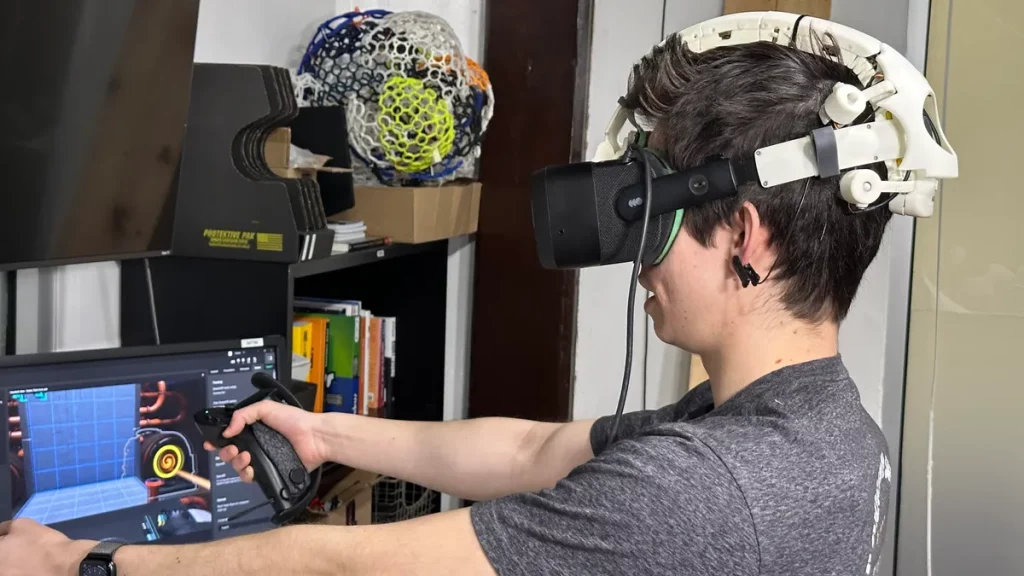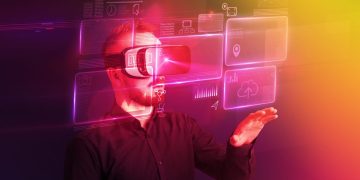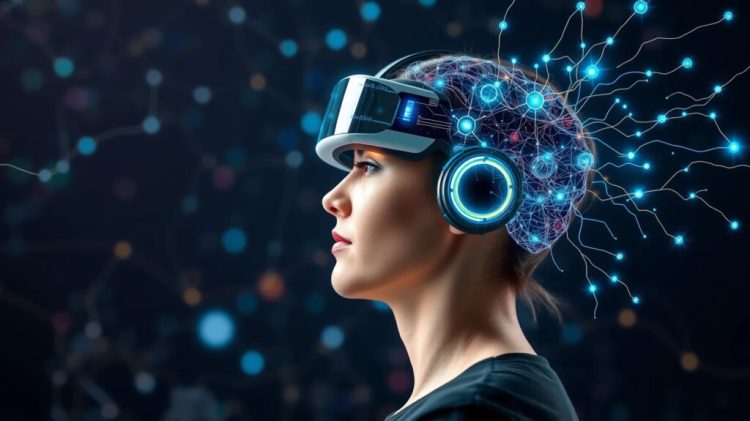Introduction
Brain-Computer Interfaces (BCIs) represent one of the most exciting frontiers in modern technology. This evolving field is poised to revolutionize not only how we interact with machines but also how we enhance human potential. By directly connecting the brain with computers, BCIs open up new possibilities in healthcare, entertainment, and human-machine collaboration. From enabling those with physical disabilities to control devices with their minds to creating immersive virtual experiences, the potential of BCIs is vast. This article explores the latest advancements in Brain-Computer Interface technology, its current applications, and the transformative impact it may have on society in the years to come.
1. Understanding Brain-Computer Interfaces
1.1 What is a Brain-Computer Interface?
A Brain-Computer Interface (BCI) is a technology that facilitates direct communication between the brain and external devices, such as computers or prosthetic limbs. By capturing neural signals, BCIs decode the brain’s electrical activity and translate it into commands that machines can understand. This bidirectional interaction allows for not only controlling devices but also for receiving sensory feedback from them, creating a symbiotic relationship between the user and technology.
BCIs can be invasive, involving surgical implantation of electrodes into the brain, or non-invasive, which uses methods like EEG (electroencephalography) to capture brain activity through external sensors. While invasive BCIs offer higher resolution and more precise control, non-invasive BCIs are safer, easier to use, and have fewer risks associated with their application.
1.2 The Technology Behind BCIs
The core of BCI technology lies in signal processing, where neural signals are captured and processed by sophisticated algorithms to interpret the user’s intentions. Electrodes either placed on the scalp (non-invasive) or directly within the brain (invasive) detect electrical signals from neurons. These signals are then sent to a computer, where they are analyzed and translated into actionable commands.
Machine learning algorithms play a key role in improving the accuracy of BCIs, as they help interpret complex neural data, filtering out noise and enhancing the interface’s ability to predict user intentions. Advances in AI are making it possible for BCIs to evolve into more intuitive and responsive systems.

2. Applications of Brain-Computer Interfaces
2.1 BCIs in Healthcare: Empowering the Disabled
One of the most promising applications of BCIs is in the medical field. For individuals with disabilities, BCIs are offering a new lease on life by enabling control over prosthetic limbs, wheelchairs, and even communication devices.
- Restoring Movement: For individuals with spinal cord injuries or neurodegenerative diseases like ALS (Amyotrophic Lateral Sclerosis), BCIs have made it possible to restore some level of motor function. Brain-controlled prosthetics or exoskeletons enable users to control robotic limbs, helping them regain mobility and independence.
- Communication for the Paralyzed: BCIs are enabling individuals who have lost the ability to speak due to conditions like locked-in syndrome to communicate through thought alone. Systems that detect specific neural patterns allow for text or speech generation, offering a voice to those who have no other means of communication.
Additionally, BCIs have been used in brain therapy, helping to treat mental health conditions such as depression and anxiety by providing feedback to the brain and training it to function in a healthier way.
2.2 BCIs in Entertainment: Immersive Experiences
Beyond healthcare, BCIs are poised to change the landscape of entertainment. Video games, virtual reality (VR), and augmented reality (AR) are all areas where BCIs are already being explored.
- Mind-Controlled Gaming: BCIs can be used to create immersive gaming experiences where the player controls the game purely with their thoughts. By tracking brain activity, games can be adjusted in real-time based on the player’s mental focus, emotions, or intentions. This opens up a new era of gameplay, where physical controllers are no longer necessary.
- Virtual Reality and Augmented Reality: BCIs can enhance VR and AR experiences by providing more natural and intuitive control over virtual environments. Instead of relying on hand controllers or voice commands, users could navigate and interact with virtual worlds purely through their brain activity. Additionally, BCIs could be used to induce specific mental states or emotional responses, creating more immersive and personalized experiences.
BCIs offer the potential for richer and more dynamic user experiences in entertainment, unlocking possibilities that were once thought to be science fiction.
2.3 BCIs in Human-Machine Collaboration: The Future of Work
In the future, BCIs may fundamentally alter the way humans collaborate with machines in the workplace. The integration of brainpower and artificial intelligence could enable individuals to perform tasks faster, more efficiently, and with greater precision.
- Enhanced Cognitive Abilities: In fields like data analysis, engineering, and design, BCIs could help workers augment their cognitive abilities. By linking their brain directly to powerful computational tools, employees could access vast amounts of information in real-time, make decisions faster, and perform complex tasks with minimal effort.
- Hands-Free Operations: BCIs could streamline operations in industries that require precision and dexterity. For example, surgeons may use BCIs to control robotic surgery systems, enabling them to operate with unparalleled precision while minimizing physical strain.
This human-machine symbiosis could lead to profound changes in productivity and innovation, as the brain’s innate capabilities are augmented by the processing power of machines.
3. Ethical Considerations and Challenges of BCIs
3.1 Privacy Concerns
One of the most pressing ethical concerns regarding BCIs is the issue of privacy. As BCIs gain the ability to read and interpret brain activity, the line between what is private and public becomes blurred. Unauthorized access to neural data could potentially lead to the manipulation of thoughts, memories, or actions.
Ensuring that BCI systems are secure from hacking or misuse is paramount. There must be robust mechanisms in place to protect users from data breaches and unauthorized surveillance. Consent protocols need to be established to ensure individuals’ mental privacy is respected.
3.2 Safety and Invasiveness
For invasive BCIs, there are concerns about the safety and long-term effects of implanting devices into the brain. While the technology has shown promise in early-stage trials, the risks associated with surgery, infection, and device malfunctions need to be thoroughly addressed. The long-term impact on brain function is still a subject of ongoing research, as there may be unknown consequences of prolonged use of implanted neural interfaces.
Non-invasive BCIs are safer but may have limitations in terms of precision and resolution. Balancing the advantages of more accurate invasive systems with the safety of non-invasive methods remains a key challenge for researchers and developers.
3.3 Ethical Use of Mind-Controlled Technology
The potential for BCIs to manipulate thoughts, emotions, and actions raises important ethical questions. Will people use this technology to enhance cognitive abilities, or could it be misused to control individuals or influence their decisions? The possibilities for mental manipulation, either by the state, corporations, or malicious actors, pose significant concerns that need to be addressed with ethical frameworks and regulatory oversight.
4. The Future of Brain-Computer Interfaces
4.1 Advancements in Technology
BCI technology is still in its early stages, but the progress being made is remarkable. Advances in brain signal processing, machine learning, and AI are likely to make BCIs more accurate, affordable, and accessible. In the future, BCIs could become as ubiquitous as smartphones, allowing anyone to enhance their cognitive abilities, communicate instantly, and interact with digital environments without the need for physical interfaces.
4.2 BCIs in Everyday Life
As BCIs become more refined, they could become a standard part of our daily lives. From controlling home appliances to accessing information instantly with a mere thought, BCIs could revolutionize how we interact with technology. The development of neural lace technologies, which allow for the seamless integration of digital systems into the brain, could blur the lines between human cognition and machine intelligence.
5. Conclusion
The evolution of Brain-Computer Interfaces is setting the stage for a new era in human-machine integration. With the potential to transform healthcare, entertainment, work, and daily life, BCIs promise to push the boundaries of what humans can achieve. However, as with all groundbreaking technologies, the ethical, safety, and privacy concerns must be addressed to ensure that the benefits of BCIs are realized in a responsible and equitable manner. As research continues and the technology matures, BCIs could change the way we experience the world, ushering in a future where the boundaries between humans and machines are seamlessly integrated.


















































Discussion about this post